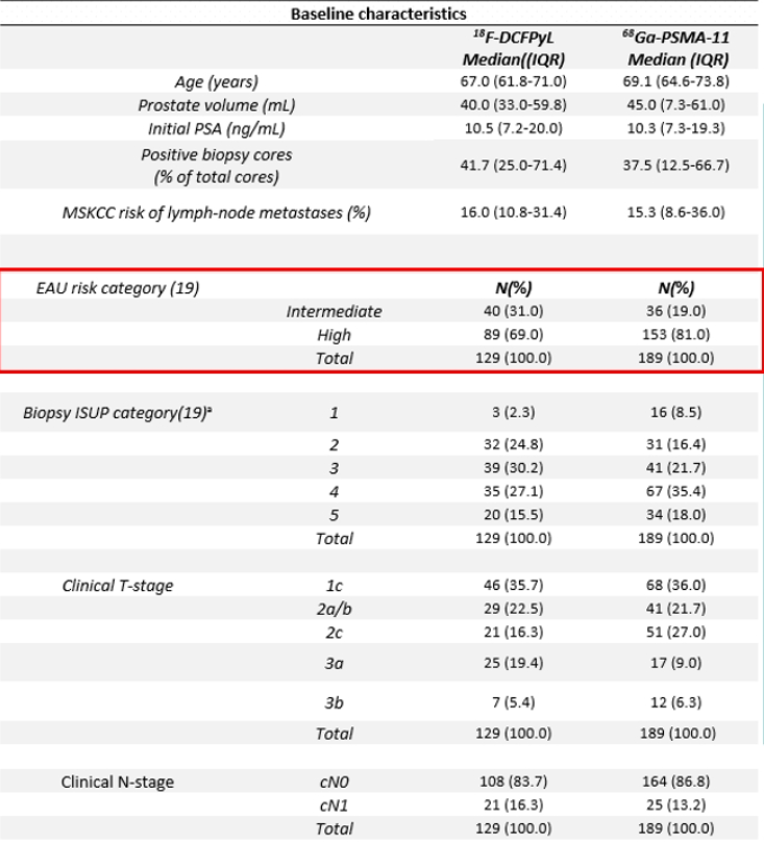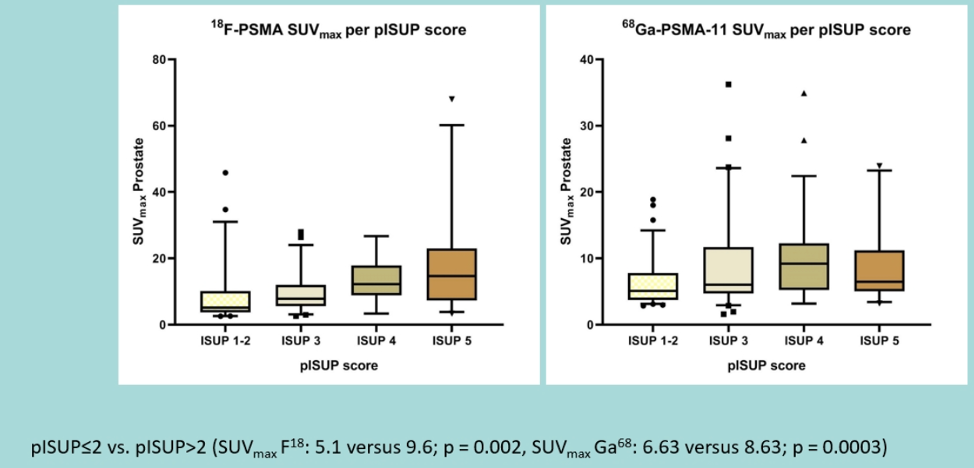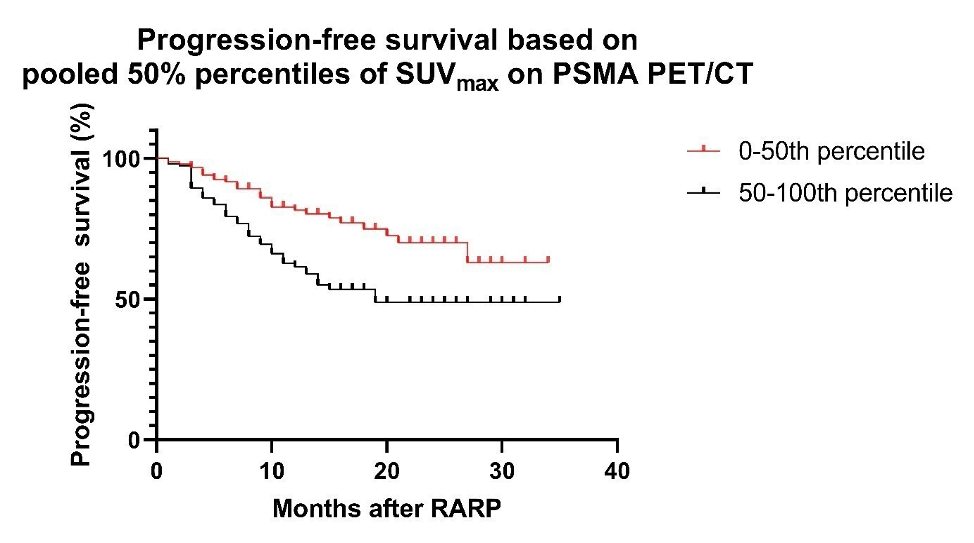The authors of this study aimed to investigate the correlation between maximum SUV (SUVmax) in patients with PCa prior to robot-assisted radical prostatectomy (RARP) and adverse pathology outcomes, including prostatectomy Gleason score (pGS), pN1 status, and biochemical progression-free survival (PFS).
This was a retrospective analysis of 318 patients with biopsy-proven PCa who underwent RARP. Prior to RARP, patients received a PSMA PET/CT with either 68Ga-PSMA (189/318 (59%) patients) or 18F-DCFPyL-PSMA (129/318 (41%) patients). PET/CT images were analyzed visually and semi-quantitatively by measuring the SUVmax of the most intense suspect lesion in the prostate.
Baseline characteristics are below:
They found that the SUVmax of the primary tumor was associated with pGS, pN1 status, and PFS. Patients with pGS≤7 showed significantly lower SUVmax compared to patients with pGS>7 for both tracers (SUVmax F18: 7.4 versus 14.5; p < 0.001, SUVmax Ga68: 7.3 versus 9.3; p = 0.01, respectively). Moreover, PCa patients with pN1 exhibited significantly higher median SUVmax than those with pN0/pNx for both tracers (SUVmax F18: 7.9 versus 12.3; p = 0.04, SUVmax Ga68: 7.6 versus 12.0 p < 0.001).
The correlation between ISUP grade and SUVmax is seen below:
Of the total cohort, 77.6% (247/318) of patients were free from progression at a median follow-up of 11.6 months (range 1.4–32.8 months). As shown in figure 1, the pooled lower 2 quartiles of SUVmax for both tracers showed a favorable PFS versus the upper 2 quartiles (p<0.001).
Figure 1- Progression-free survival of prostate cancer patients after robot-assisted radical prostatectomy (RARP), based on pooled 50% percentiles of SUVmax on PSMA PET/CT (p<0.001)
In this interesting proof of concept study, the authors found that intraprostatic PSMA-PET/CT intensity, as measured by SUVmax, may be a valuable innovative biomarker of disease aggressiveness in patients with localized PCa. SUVmax in the primary tumor is highly associated with pGS, pN1 status, and PFS using both the 68Ga-PSMA and 18F-DCFPyL-PSMA tracers.
Presented by: Yves Bodar, MS, Department of Urology, Amsterdam University Medical Centres (VU University), De Boelelaan, Department of Radiology and Nuclear Medicine, Amsterdam University Medical Centres, Prostate Cancer Network, Amsterdam, The Netherlands
Written by: Thenappan (Thenu) Chandrasekar, MD – Urologic Oncologist, Assistant Professor of Urology, Sidney Kimmel Cancer Center, Thomas Jefferson University, @tchandra_uromd on Twitter during the 2021 European Association of Urology, EAU 2021- Virtual Meeting, July 8-12, 2021.